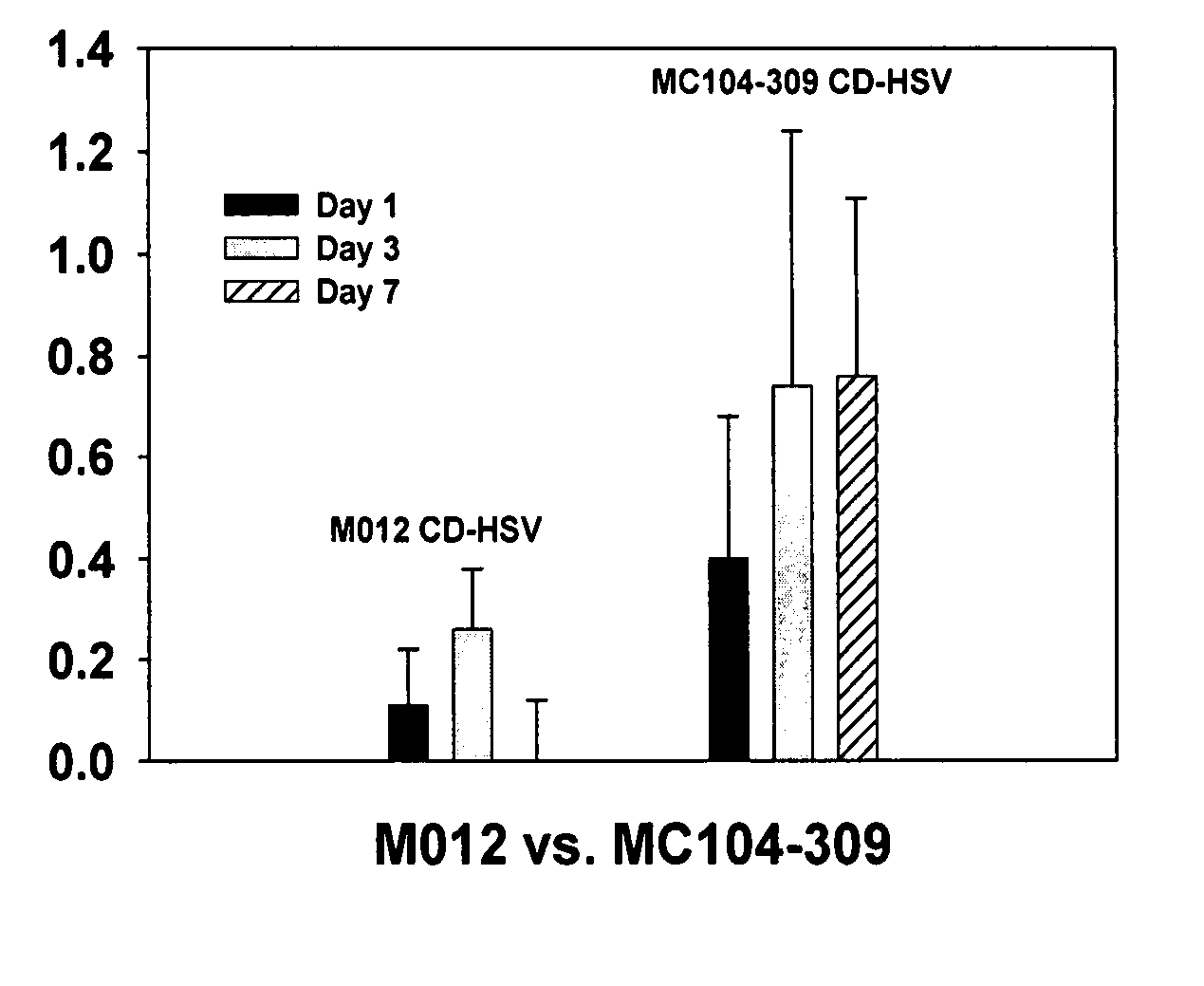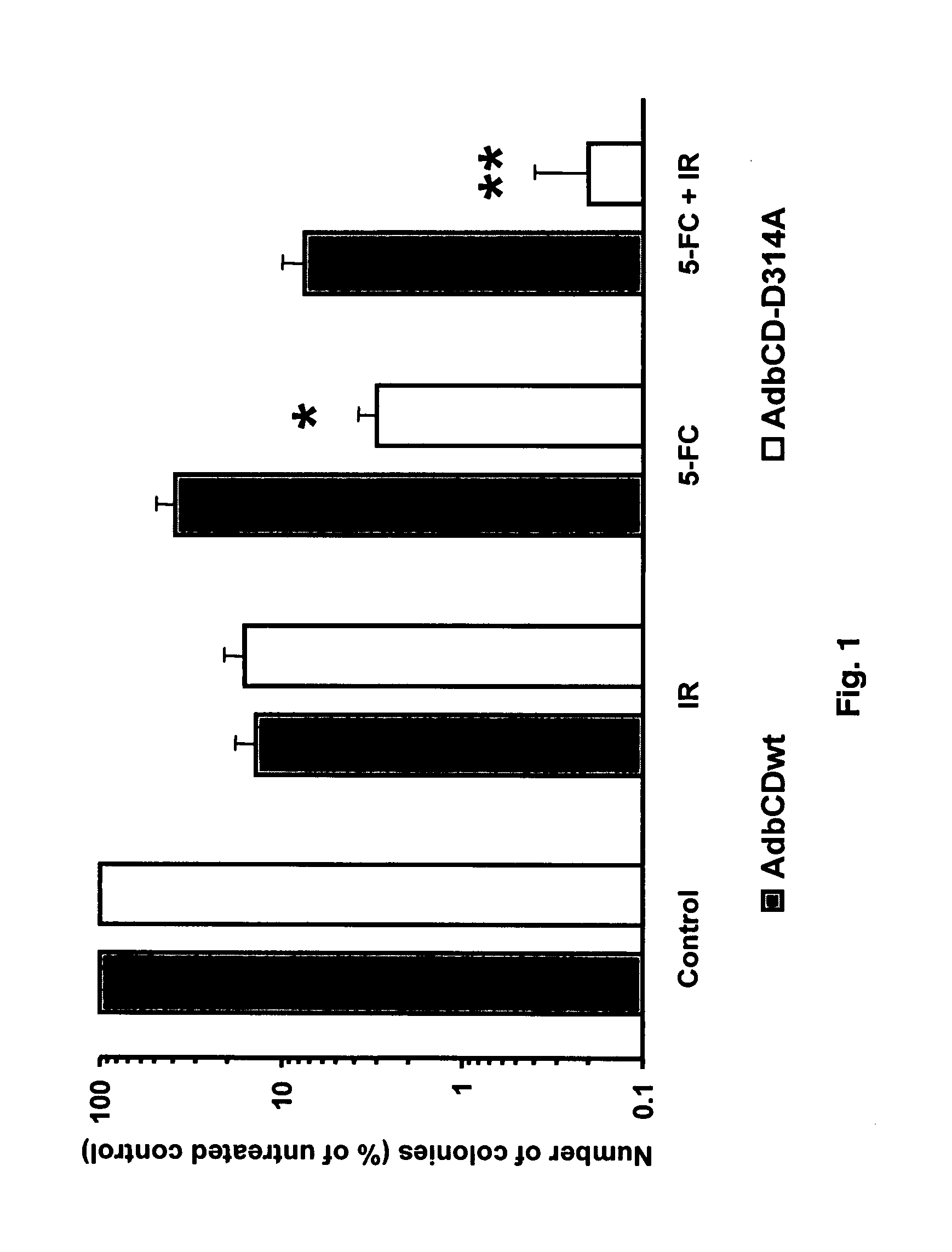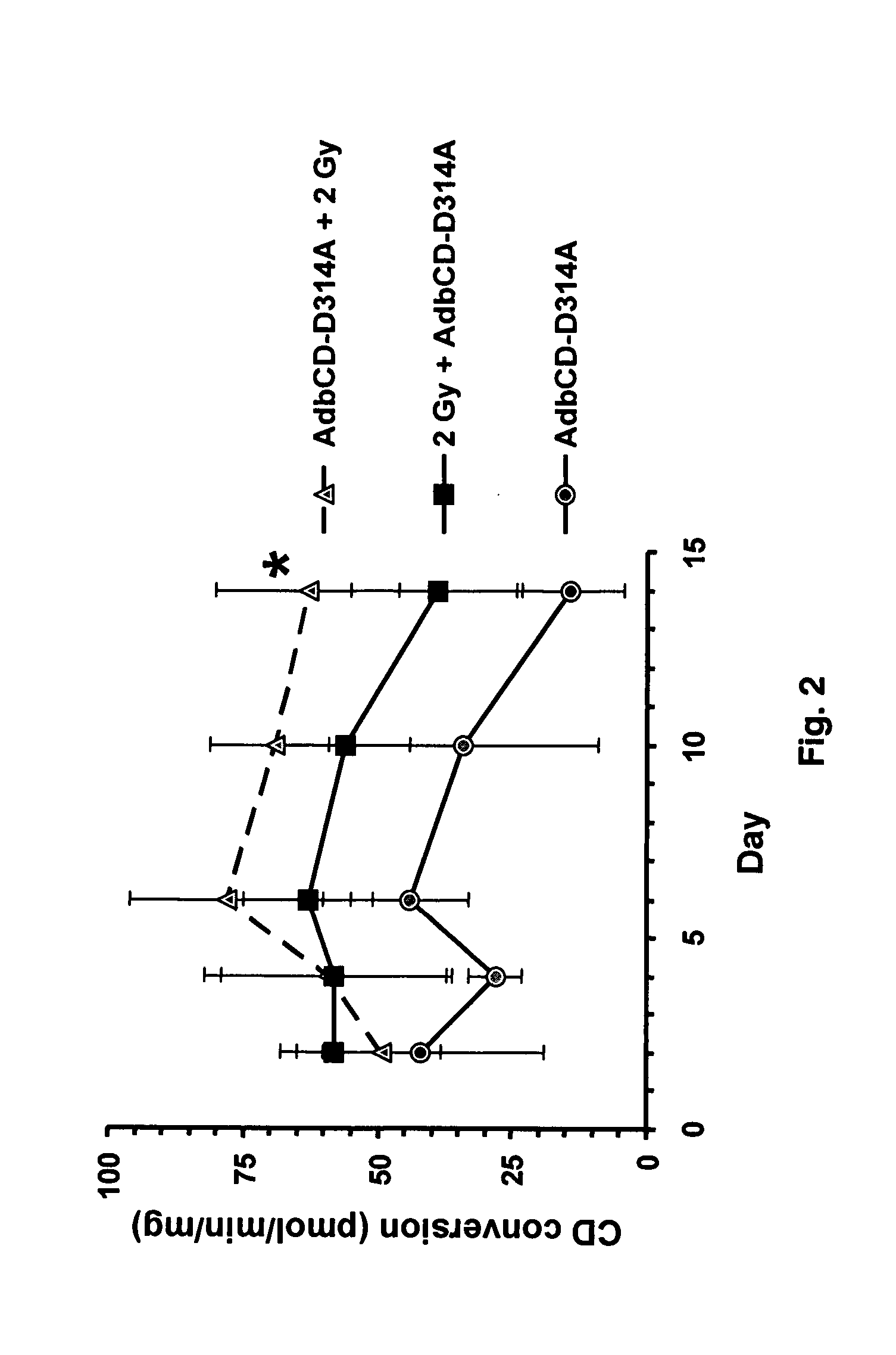Viral vector driven mutant bacterial cytosine deaminase gene and uses thereof
a technology of cytosine deaminase and vector, which is applied in the field of molecular biology, radiation oncology and cancer therapy, can solve the problems of limiting the clinical potential of gene therapy, tumor regression, and achieves prolonged tumor growth inhibition, reduced efficiency, and greater preference for fold substrates
- Summary
- Abstract
- Description
- Claims
- Application Information
AI Technical Summary
Benefits of technology
Problems solved by technology
Method used
Image
Examples
Embodiment Construction
[0042] The present invention concerns in vivo transfection of cancer cells in solid tumors with an adenovirus encoding the cytosine deaminase gene, administration of systemic 5-FC, and radiation therapy of the tumor which resulted in tumor regression and prolonged tumor growth inhibition compared to control treatments with molecular chemotherapy or radiation therapy alone. This is the first description of how to transfect established tumors in vivo with the cytosine deaminase gene to produce enhanced therapeutic effects with the combination of molecular chemotherapy and radiation therapy. Conventional systemic administration of 5-FU produces dose limiting normal tissue toxicity. The local production of 5-FU within a tumor transfected with the cytosine deaminase gene and systemic administration of 5-FC, results in higher intratumor concentrations of 5-FU than achievable with systemic administration of 5-FU, thus improving the therapeutic ratio in combination with radiotherapy. The co...
PUM
| Property | Measurement | Unit |
|---|---|---|
| Time | aaaaa | aaaaa |
| Time | aaaaa | aaaaa |
| Dimensionless property | aaaaa | aaaaa |
Abstract
Description
Claims
Application Information
 Login to View More
Login to View More - R&D
- Intellectual Property
- Life Sciences
- Materials
- Tech Scout
- Unparalleled Data Quality
- Higher Quality Content
- 60% Fewer Hallucinations
Browse by: Latest US Patents, China's latest patents, Technical Efficacy Thesaurus, Application Domain, Technology Topic, Popular Technical Reports.
© 2025 PatSnap. All rights reserved.Legal|Privacy policy|Modern Slavery Act Transparency Statement|Sitemap|About US| Contact US: help@patsnap.com



